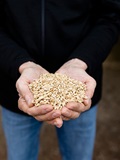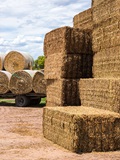Darling Downs
20 May 2020
| Date | DD 23 | DD 22 | DD 5YA |
|---|---|---|---|
| 06-Jan-23 | 351 | 260 | 370 |
| 13-Jan-23 | 365 | 260 | 370 |
| 20-Jan-23 | 365 | 260 | 374 |
| 27-Jan-23 | 365 | 260 | 377 |
| 03-Feb-23 | 370 | 260 | 379 |
| 10-Feb-23 | 370 | 260 | 379 |
| 17-Feb-23 | 370 | 260 | 372 |
| 24-Feb-23 | 370 | 260 | 365 |
| 03-Mar-23 | 375 | 260 | 365 |
| 10-Mar-23 | 375 | 260 | 373 |
| 17-Mar-23 | 373 | 265 | 377 |
| 24-Mar-23 | 370 | 265 | 377 |
| 31-Mar-23 | 370 | 265 | 377 |
| 07-Apr-23 | 370 | 265 | 377 |
| 14-Apr-23 | 370 | 265 | 373 |
| 21-Apr-23 | 370 | 265 | 374 |
| 28-Apr-23 | 370 | 265 | 370 |
| 05-May-23 | 370 | 265 | 370 |
| 12-May-23 | 370 | 265 | 370 |
| 19-May-23 | 370 | 265 | 379 |
| 26-May-23 | 370 | 265 | 383 |
| 02-Jun-23 | 370 | 265 | 385 |
| 09-Jun-23 | 365 | 265 | 383 |
| 16-Jun-23 | 363 | 265 | 377 |
| 23-Jun-23 | 360 | 265 | 373 |
| 30-Jun-23 | 355 | 265 | 377 |
| 07-Jul-23 | 345 | 268 | 383 |
| 14-Jul-23 | 333 | 268 | 383 |
| 21-Jul-23 | 320 | 268 | 394 |
| 28-Jul-23 | 310 | 268 | 386 |
| 04-Aug-23 | 310 | 268 | 386 |
| 11-Aug-23 | 310 | 268 | 384 |
| 18-Aug-23 | 308 | 268 | 407 |
| 25-Aug-23 | 305 | 268 | 396 |
| 01-Sep-23 | 305 | 268 | 385 |
| 08-Sep-23 | 268 | 385 | |
| 15-Sep-23 | 255 | 367 | |
| 22-Sep-23 | 255 | 367 | |
| 29-Sep-23 | 255 | 365 | |
| 06-Oct-23 | 253 | 362 | |
| 13-Oct-23 | 253 | 362 | |
| 20-Oct-23 | 255 | 362 | |
| 27-Oct-23 | 258 | 363 | |
| 03-Nov-23 | 261 | 358 | |
| 10-Nov-23 | 263 | 359 | |
| 17-Nov-23 | 273 | 356 | |
| 24-Nov-23 | 275 | 356 | |
| 01-Dec-23 | 279 | 359 | |
| 08-Dec-23 | 283 | 362 | |
| 15-Dec-23 | 290 | 363 | |
| 22-Dec-23 | 310 | 357 | |
| 29-Dec-23 | 338 | 370 |
Notes:
Change in price is the change since the last report. Hay quoted is sourced and delivered locally, GST exclusive unless stated otherwise. It should be noted that local prices quoted may not be the cheapest available, sourcing it from another region may be more affordable, and buyers are encouraged to evaluate all options. Prices are indicative to a mid-range shedded product, and based on the best indication of market value at the time of reporting. It should be noted there is a wide variation in quality of hay, prices for a mid-range product will not reflect the weighted average of trade. Prices will naturally vary based on the product quantity and quality, buyer/seller relationship and the size of the trade.The hay report has been commissioned by Dairy Australia to provide an independent and timely assessment of hay markets in each dairy region. This report is created using data provided by the Australian Fodder Industry Association (AFIA). It should be remembered that actual prices may vary for quality or other reasons. Whilst all reasonable steps have been taken to ensure the accuracy of the information contained in this report, Dairy Australia disclaims all liability to the fullest extent permitted by Australian law for any inadvertent errors and for any losses or damages stemming from reliance upon its content. Dairy Australia recommends all persons seek independent advice and, where appropriate, advice from a qualified advisor before making any decisions about changes to business strategy.
Commentary
- Little to no rain fell during the week, with consecutive days of sunshine reported across large parts of the region. Some growers in the area are taking the risk by planting into wet soil where access is possible, in the hope the sunny dry conditions continue.
- Replanting of crops lost from heavy rains/flooding is ongoing in any fields dry enough to allow access.
- A number of growers have made the call to step back from planting a winter crop and will instead focus on the summer crop with a full moisture profile.
- For flood relief and assessment aid visit https://www.daf.qld.gov.au/
- There are reports feedlots in the area are running short of feed grain due to the weather conditions, lack of transport, and increased demand from international markets. This has led to some smaller feedlots closing temporarily and therefore not sourcing other feed products.
- Barley and wheat crops sown earlier in areas less affected by rains are continuing to come on well.
- In those areas too wet to sow there has been an increase in reports of mice in the sheds and silos as the mice feed on the unplanted seed. Whilst the numbers are low, they are causing damage.
- Fuel, fertiliser, chemicals and freight costs continue to be a concern for most in the region, as well as a lack of contractors and the inability for transport to get to some of the on-farm supply.
- Sales have increased steadily this week with a demand for good quality hay across the board, even with the plentiful supply of green feed. Feedlots and livestock producers are sourcing at various quality levels as supply of feed grain is restricted due to available stocks as well as transport and logistics issues.
- Some change to pricing this week.
- Cereal hay: +/-0 ($255 to $275/t). Prices remain steady this week.
- Lucerne hay: +/-0 ($380 to $420/t). Prices remain steady this week.
- Straw: +/-0 ($70 to $90/t). Prices remain steady this week.
- Pasture hay: +$13 ($215 to $250/t) Prices increase this week due to short supply
- Please note: Unless stated otherwise, prices are per tonne, sourced and delivered locally. The price range indicated is for feeds of varying quality with the price range generally indicative of quality of feed. We recommend feed testing and viewing of fodder before purchase to be sure of the quality of feed.

